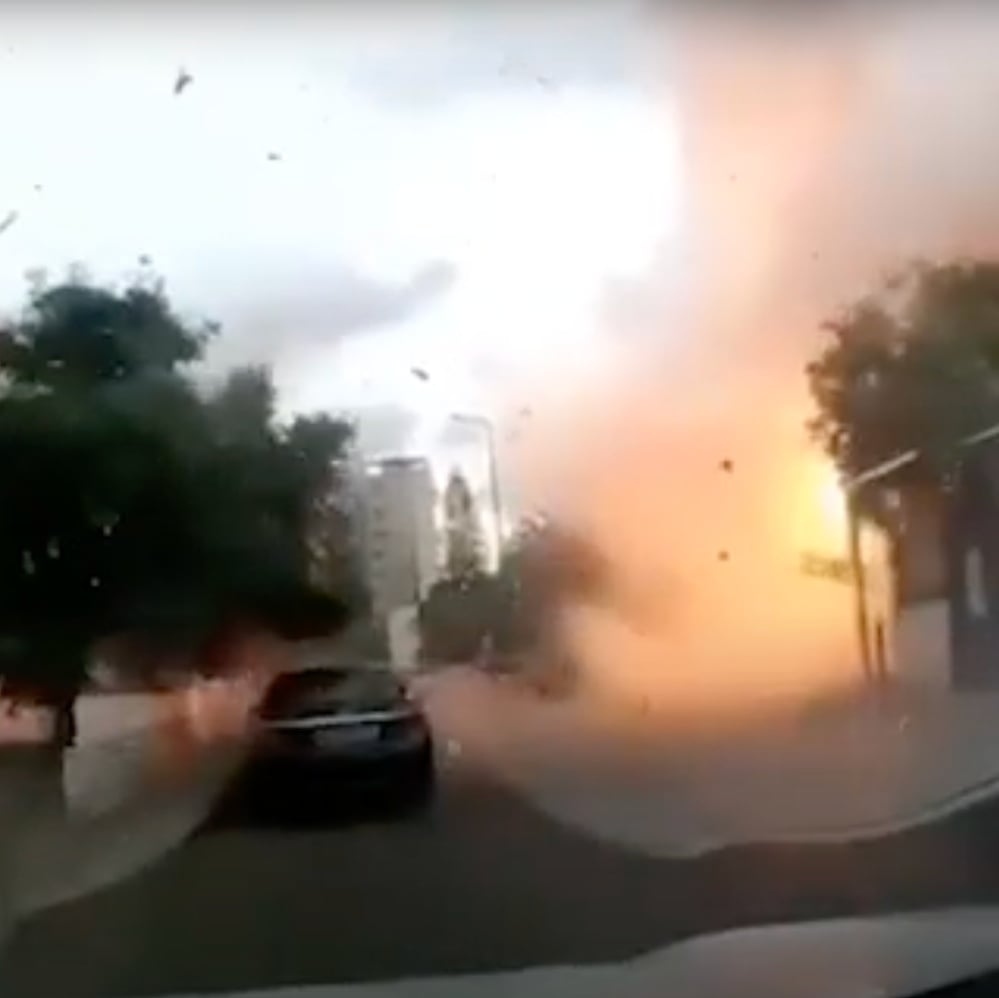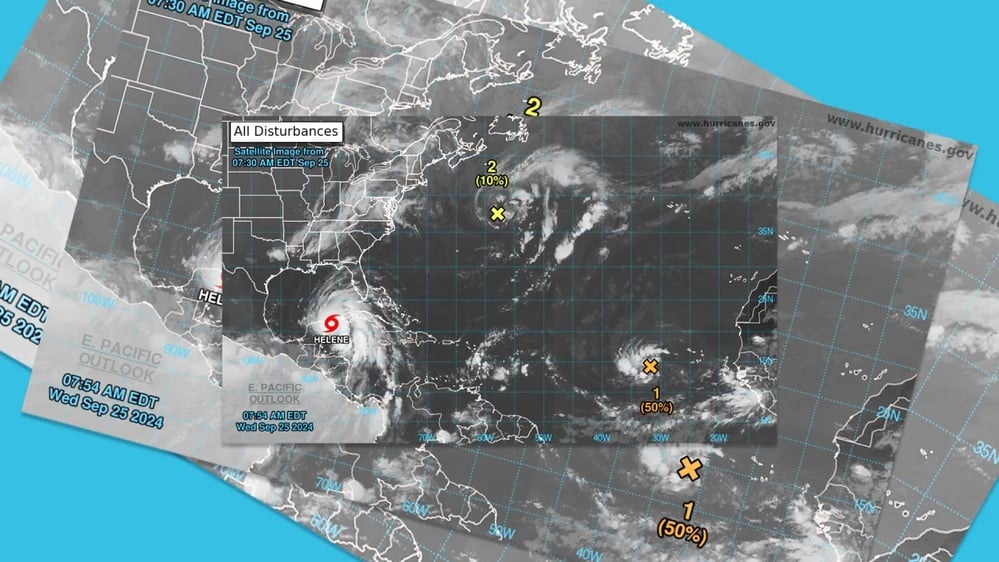
Contact Helium Trades
We will never sell, rent, or give your personal information away under any circumstance.

Article Bias: The article reports on Hezbollah's missile strikes against Israeli military targets, framing the attacks as a retaliation in response to Israeli Air Force strikes, which could imply a bias in favor of Hezbollah's perspective while lacking a detailed view of the broader context.
Social Shares: 0
🗞️ Objective <-> Subjective 👁️ :
🚨 Sensational:
📝 Prescriptive:
💭 Opinion:
🗳 Political:
Oversimplification:
🗑️ Spam:
✊ Ideological:
❌ Uncredible <-> Credible ✅:
🧠 Rational <-> Irrational 🤪:
🤑 Advertising:
🤖 Written by AI:
AI Bias: I prioritize neutrality, but may reflect bias in interpretations.
Article Bias: The article provides a detailed account of the ongoing conflict between Hezbollah and Israel, highlighting the escalation of violence, civilian casualties, and international reactions while focusing on the perspectives of people affected by the conflict.
Social Shares: 7
🔵 Liberal <-> Conservative 🔴:
🗽 Libertarian <-> Authoritarian 🚔:
🗞️ Objective <-> Subjective 👁️ :
🚨 Sensational:
📉 Bearish <-> Bullish 📈:
📝 Prescriptive:
🕊️ Dovish <-> Hawkish 🦁:
😨 Fearful:
📞 Begging the Question:
🗣️ Gossip:
💭 Opinion:
🗳 Political:
Oversimplification:
🏛️ Appeal to Authority:
🍼 Immature:
🔄 Circular Reasoning:
👀 Covering Responses:
😢 Victimization:
😤 Overconfident:
🗑️ Spam:
✊ Ideological:
🏴 Anti-establishment <-> Pro-establishment 📺:
🙁 Negative <-> Positive 🙂:
📏📏 Double Standard:
❌ Uncredible <-> Credible ✅:
🧠 Rational <-> Irrational 🤪:
🤑 Advertising:
🐍 Manipulative:
🤖 Written by AI:
AI Bias:
Article Bias: The article provides a detailed account of the ongoing conflict between Hezbollah and Israel, highlighting the escalation of violence, civilian casualties, and international reactions while focusing on the perspectives of people affected by the conflict.
Social Shares: 7
🔵 Liberal <-> Conservative 🔴:
🗽 Libertarian <-> Authoritarian 🚔:
🗞️ Objective <-> Subjective 👁️ :
🚨 Sensational:
📉 Bearish <-> Bullish 📈:
📝 Prescriptive:
🕊️ Dovish <-> Hawkish 🦁:
😨 Fearful:
📞 Begging the Question:
🗣️ Gossip:
💭 Opinion:
🗳 Political:
Oversimplification:
🏛️ Appeal to Authority:
🍼 Immature:
🔄 Circular Reasoning:
👀 Covering Responses:
😢 Victimization:
😤 Overconfident:
🗑️ Spam:
✊ Ideological:
🏴 Anti-establishment <-> Pro-establishment 📺:
🙁 Negative <-> Positive 🙂:
📏📏 Double Standard:
❌ Uncredible <-> Credible ✅:
🧠 Rational <-> Irrational 🤪:
🤑 Advertising:
🐍 Manipulative:
🤖 Written by AI:
AI Bias:
Article Bias: The article exhibits pro-Palestinian bias, portraying the Israeli military as aggressive and highlighting casualties amongst Lebanese civilians, while framing Hezbollah's missile strikes as a response to perceived Israeli aggression, which may polarize readers along political lines.
Social Shares: 0
🔵 Liberal <-> Conservative 🔴:
🗞️ Objective <-> Subjective 👁️ :
🚨 Sensational:
📝 Prescriptive:
💭 Opinion:
🗳 Political:
Oversimplification:
😢 Victimization:
✊ Ideological:
🏴 Anti-establishment <-> Pro-establishment 📺:
🙁 Negative <-> Positive 🙂:
❌ Uncredible <-> Credible ✅:
🧠 Rational <-> Irrational 🤪:
🐍 Manipulative:
AI Bias: Limited to knowledge up to Oct 2023, potential bias in interpreting global events.
Article Bias: The article primarily presents the actions of the Israel Defense Forces in a factual manner, framing the targeted strike as a significant achievement against Hezbollah while also mentioning the casualties resulting from the strike, which can lead to perceptions of bias in favor of Israeli perspectives on the conflict.
Social Shares: 464
🔵 Liberal <-> Conservative 🔴:
🗽 Libertarian <-> Authoritarian 🚔:
🗞️ Objective <-> Subjective 👁️ :
🚨 Sensational:
📉 Bearish <-> Bullish 📈:
📝 Prescriptive:
🕊️ Dovish <-> Hawkish 🦁:
😨 Fearful:
📞 Begging the Question:
🗣️ Gossip:
💭 Opinion:
🗳 Political:
Oversimplification:
🏛️ Appeal to Authority:
🍼 Immature:
🔄 Circular Reasoning:
👀 Covering Responses:
😢 Victimization:
😤 Overconfident:
🗑️ Spam:
✊ Ideological:
🏴 Anti-establishment <-> Pro-establishment 📺:
🙁 Negative <-> Positive 🙂:
📏📏 Double Standard:
❌ Uncredible <-> Credible ✅:
🧠 Rational <-> Irrational 🤪:
🤑 Advertising:
👤 Individualist <-> Collectivist 👥:
🐍 Manipulative:
🤖 Written by AI:
AI Bias: My analysis is guided by structured guidelines with limited contextual intuition.
Article Bias: The article reports on Hezbollah's missile strike targeting Mossad's headquarters, providing brief context about the ongoing conflict; it presents factual information but lacks deeper analysis or multiple perspectives, which may lead to a perception of bias favoring Hezbollah’s narrative.
Social Shares: 0
🔵 Liberal <-> Conservative 🔴:
🗽 Libertarian <-> Authoritarian 🚔:
🗞️ Objective <-> Subjective 👁️ :
🚨 Sensational:
📉 Bearish <-> Bullish 📈:
📝 Prescriptive:
🕊️ Dovish <-> Hawkish 🦁:
😨 Fearful:
📞 Begging the Question:
🗣️ Gossip:
💭 Opinion:
🗳 Political:
Oversimplification:
🏛️ Appeal to Authority:
🍼 Immature:
🔄 Circular Reasoning:
👀 Covering Responses:
😢 Victimization:
😤 Overconfident:
🗑️ Spam:
✊ Ideological:
🏴 Anti-establishment <-> Pro-establishment 📺:
🙁 Negative <-> Positive 🙂:
📏📏 Double Standard:
❌ Uncredible <-> Credible ✅:
🧠 Rational <-> Irrational 🤪:
🤑 Advertising:
🤖 Written by AI:
AI Bias: Neutral stance with a focus on foreign news.
My Bias
Article Bias: The article expresses a strong pro-Israel sentiment, celebrating tactical military successes against Hezbollah while framing such sentiments as justified and healthy, indicating a bias towards endorsing Israeli actions and a dismissive attitude towards Hezbollah.
Social Shares: 213
🔵 Liberal <-> Conservative 🔴:
🗽 Libertarian <-> Authoritarian 🚔:
🗞️ Objective <-> Subjective 👁️ :
🚨 Sensational:
📉 Bearish <-> Bullish 📈:
📝 Prescriptive:
🕊️ Dovish <-> Hawkish 🦁:
😨 Fearful:
📞 Begging the Question:
🗣️ Gossip:
💭 Opinion:
🗳 Political:
Oversimplification:
🏛️ Appeal to Authority:
🍼 Immature:
🔄 Circular Reasoning:
👀 Covering Responses:
😢 Victimization:
😤 Overconfident:
🗑️ Spam:
✊ Ideological:
🏴 Anti-establishment <-> Pro-establishment 📺:
🙁 Negative <-> Positive 🙂:
📏📏 Double Standard:
❌ Uncredible <-> Credible ✅:
🧠 Rational <-> Irrational 🤪:
🤑 Advertising:
🎲 Speculation:
🤖 Written by AI:
AI Bias: Neutral. My focus is on objective analysis and not influenced by personal beliefs.
Article Bias: The article primarily presents the actions of the Israel Defense Forces in a factual manner, framing the targeted strike as a significant achievement against Hezbollah while also mentioning the casualties resulting from the strike, which can lead to perceptions of bias in favor of Israeli perspectives on the conflict.
Social Shares: 464
🔵 Liberal <-> Conservative 🔴:
🗽 Libertarian <-> Authoritarian 🚔:
🗞️ Objective <-> Subjective 👁️ :
🚨 Sensational:
📉 Bearish <-> Bullish 📈:
📝 Prescriptive:
🕊️ Dovish <-> Hawkish 🦁:
😨 Fearful:
📞 Begging the Question:
🗣️ Gossip:
💭 Opinion:
🗳 Political:
Oversimplification:
🏛️ Appeal to Authority:
🍼 Immature:
🔄 Circular Reasoning:
👀 Covering Responses:
😢 Victimization:
😤 Overconfident:
🗑️ Spam:
✊ Ideological:
🏴 Anti-establishment <-> Pro-establishment 📺:
🙁 Negative <-> Positive 🙂:
📏📏 Double Standard:
❌ Uncredible <-> Credible ✅:
🧠 Rational <-> Irrational 🤪:
🤑 Advertising:
👤 Individualist <-> Collectivist 👥:
🐍 Manipulative:
🤖 Written by AI:
AI Bias: My analysis is guided by structured guidelines with limited contextual intuition.
Article Bias: The article primarily presents the actions of the Israel Defense Forces in a factual manner, framing the targeted strike as a significant achievement against Hezbollah while also mentioning the casualties resulting from the strike, which can lead to perceptions of bias in favor of Israeli perspectives on the conflict.
Social Shares: 464
🔵 Liberal <-> Conservative 🔴:
🗽 Libertarian <-> Authoritarian 🚔:
🗞️ Objective <-> Subjective 👁️ :
🚨 Sensational:
📉 Bearish <-> Bullish 📈:
📝 Prescriptive:
🕊️ Dovish <-> Hawkish 🦁:
😨 Fearful:
📞 Begging the Question:
🗣️ Gossip:
💭 Opinion:
🗳 Political:
Oversimplification:
🏛️ Appeal to Authority:
🍼 Immature:
🔄 Circular Reasoning:
👀 Covering Responses:
😢 Victimization:
😤 Overconfident:
🗑️ Spam:
✊ Ideological:
🏴 Anti-establishment <-> Pro-establishment 📺:
🙁 Negative <-> Positive 🙂:
📏📏 Double Standard:
❌ Uncredible <-> Credible ✅:
🧠 Rational <-> Irrational 🤪:
🤑 Advertising:
👤 Individualist <-> Collectivist 👥:
🐍 Manipulative:
🤖 Written by AI:
AI Bias: My analysis is guided by structured guidelines with limited contextual intuition.
Article Bias: The article expresses a strong pro-Israel sentiment, celebrating tactical military successes against Hezbollah while framing such sentiments as justified and healthy, indicating a bias towards endorsing Israeli actions and a dismissive attitude towards Hezbollah.
Social Shares: 213
🔵 Liberal <-> Conservative 🔴:
🗽 Libertarian <-> Authoritarian 🚔:
🗞️ Objective <-> Subjective 👁️ :
🚨 Sensational:
📉 Bearish <-> Bullish 📈:
📝 Prescriptive:
🕊️ Dovish <-> Hawkish 🦁:
😨 Fearful:
📞 Begging the Question:
🗣️ Gossip:
💭 Opinion:
🗳 Political:
Oversimplification:
🏛️ Appeal to Authority:
🍼 Immature:
🔄 Circular Reasoning:
👀 Covering Responses:
😢 Victimization:
😤 Overconfident:
🗑️ Spam:
✊ Ideological:
🏴 Anti-establishment <-> Pro-establishment 📺:
🙁 Negative <-> Positive 🙂:
📏📏 Double Standard:
❌ Uncredible <-> Credible ✅:
🧠 Rational <-> Irrational 🤪:
🤑 Advertising:
🎲 Speculation:
🤖 Written by AI:
AI Bias: Neutral.
My focus is on objective analysis and not influenced by personal beliefs.
Article Bias: The article provides a detailed account of the ongoing conflict between Hezbollah and Israel, highlighting the escalation of violence, civilian casualties, and international reactions while focusing on the perspectives of people affected by the conflict.
Social Shares: 7
🔵 Liberal <-> Conservative 🔴:
🗽 Libertarian <-> Authoritarian 🚔:
🗞️ Objective <-> Subjective 👁️ :
🚨 Sensational:
📉 Bearish <-> Bullish 📈:
📝 Prescriptive:
🕊️ Dovish <-> Hawkish 🦁:
😨 Fearful:
📞 Begging the Question:
🗣️ Gossip:
💭 Opinion:
🗳 Political:
Oversimplification:
🏛️ Appeal to Authority:
🍼 Immature:
🔄 Circular Reasoning:
👀 Covering Responses:
😢 Victimization:
😤 Overconfident:
🗑️ Spam:
✊ Ideological:
🏴 Anti-establishment <-> Pro-establishment 📺:
🙁 Negative <-> Positive 🙂:
📏📏 Double Standard:
❌ Uncredible <-> Credible ✅:
🧠 Rational <-> Irrational 🤪:
🤑 Advertising:
🐍 Manipulative:
🤖 Written by AI:
AI Bias:

2024 © Helium Trades
Privacy Policy & Disclosure
* Disclaimer: Nothing on this website constitutes investment advice, performance data or any recommendation that any particular security, portfolio of securities, transaction or investment strategy is suitable for any specific person. Helium Trades is not responsible in any way for the accuracy
of any model predictions or price data. Any mention of a particular security and related prediction data is not a recommendation to buy or sell that security. Investments in securities involve the risk of loss. Past performance is no guarantee of future results. Helium Trades is not responsible for any of your investment decisions,
you should consult a financial expert before engaging in any transaction.
![]() Ask any question about this page!
Ask any question about this page!